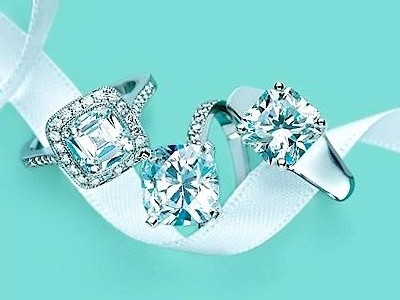My Ten-Point Action Plan for Spending One Million Dollars at Tiffany
by David Rees

Perpetual presidential candidate Newt Gingrich made news last month when it was revealed he and his wife Callista carried a credit line of up to $500,000 at Tiffany, a jewelry store catering to the powerful and virtuous. He made news again last week when it was revealed he had a second line of credit — this one up to $1,000,000. (New Gingrich’s top fundraising staff has since quit.)
Friends, you shouldn’t be surprised by the Gingriches’ million-dollar credit line at Tiffany. After all, people spend a million dollars at Tiffany every day — regular people just like you! How do they do it? By following my Ten-Point Action Plan for Spending One Million Dollars at Tiffany. This exciting, foolproof system is designed to get results — and fast.
STEP 1. Burst through the doors of your local Tiffany with a song in your heart and a million dollars in your wallet. If you don’t have access to cash, inquire about opening an interest-free line of credit; odds are Tiffany will be happy to oblige.
BEGINNING BALANCE: $1,000,000
STEP 2. Start buying necklaces! When it comes to jewelry, necklaces are the perfect “gateway drug.” I’ve bought many beautiful necklaces for $5,000. You’ve got $1,000,000 in credit; why not buy 30? After all, the only image more alluring than a woman gliding into a room wearing a fine necklace is a woman staggering under the weight of 30 of them, looking like a wayward galaxy smashed into her collarbone.
Ladies, try mixing and matching: drape a diamond necklace over a gold necklace. Then add a ruby necklace. Then add twenty-seven more necklaces. This funky bohemian look will charm the crowd at your next poetry slam.
30 necklaces at $5,000/necklace = $150,000
BALANCE REMAINING: $850,000
STEP 3. While the sales associates are polishing your necklaces, move on to earrings. Earrings are surprisingly useful; I can’t count how many times I’ve silenced a naggy-ass lover by flinging fistfuls of brand-new, sparkling earrings at her. Because earlobes are an inappropriate forum for advertising one’s poverty, my rule of thumb is “Never spend less than $2,500 on a pair of earrings.” $100,000 should get you 40 decent pairs. Coupon-clippers, remember: 40 pairs of earrings is actually 80 separate earrings; there’s no limit to the mixing and matching you’ll be able to do (especially if you pierce your nose).
40 pairs of earrings at $2,500/pair = $100,000
BALANCE REMAINING: $750,000
STEP 4. The bad news: You’ve already spent a fourth of your credit. The good news: You still have three-quarters of a million dollars, which is nothing to shake a stick at. It’s time to start buying engagement rings. According to my pastor, a gentleman should spend $50,000 on his fiancee’s ring; anything less says, “I think you’re human garbage.”
Already married? There’s nothing wrong with a contingency plan (i.e., a box of rings buried in the backyard). Assume you’ll be married four times, just to be safe.
4 engagement rings at $50,000/ring = $200,000
BALANCE REMAINING: $550,000
STEP 5. After all that shopping, you’ll probably be hungry. Pay a Tiffany employee $25,000 to buy you a burrito.
1 burrito at $25,000/burrito = $25,000
BALANCE REMAINING: $525,000
STEP 6. All of a sudden, $525,000 doesn’t seem like much money. It’s not even $600,000! If the past few years have taught Americans anything, it’s that financial stress can be overwhelming: “Are we living within our budget?” “Do we have enough money to make ends meet at Tiffany?” Relax by treating yourself to a really nice brooch, like a diamond-encrusted pin of a gazelle, emu, yak, ibex or hartebeest. Animal-shaped pins are a great way to remind your peers that you are an interesting, creative person who likes the idea of nature. (NOTE: Remember to ask the Tiffany employee to write down the name of the animal, so you’ll have an answer when someone asks, “What’s that blob on your lapel?”)
1 animal pin at $125,000/animal pin = $125,00
BALANCE REMAINING: $400,000
STEP 7. You’ve got 30 necklaces, 80 earrings, four engagement rings, a burrito and a brooch. Maybe it’s time to buy something other than jewelry? Fortunately, Tiffany showrooms are filled with conversation pieces. Buy them. Do you like the jeweler’s bowtie? Buy it. Would the flowers on the counter look nice in your kitchen? Buy them. The wainscoting behind the counter might work in your den — buy it. Intriguing magazines in the employee break room? Buy them. Soon you’ll be able to recreate the “Tiffany experience” in the privacy of your own homes.
Miscellaneous items = $160,000
BALANCE REMAINING: $ 240,000
STEP 8. Buy a car.
1 car at $85,000/car = $85,000
BALANCE REMAINING: $155,000
STEP 9. I can’t believe I almost forgot wristwatches! Wristwatches (some call them “chronometers”) are unique among jewelry in that they use science to tell time. Support the spirit of scientific inquiry by buying ten wristwatches: one for telling time in the morning, one for telling time in the evening and eight for telling time in the bathtub.
10 wristwatches at $15,498/wristwatch = $154,980
BALANCE REMAINING: $20
STEP 10. Congratulations on the successful execution of my foolproof system! Who’s a big boy? You are! You still have 20 dollars left, which is a testament to your frugality and fundamental decency. Why not dabble in philanthropy? Give it to a homeless person loitering outside the showroom; it’ll make his day.
1 philanthropic gesture at $20/gesture = $20. (NOTE: Make sure he promises not to waste it on drugs.)
David Rees is a former political cartoonist. Now he is an artisanal pencil sharpener.
